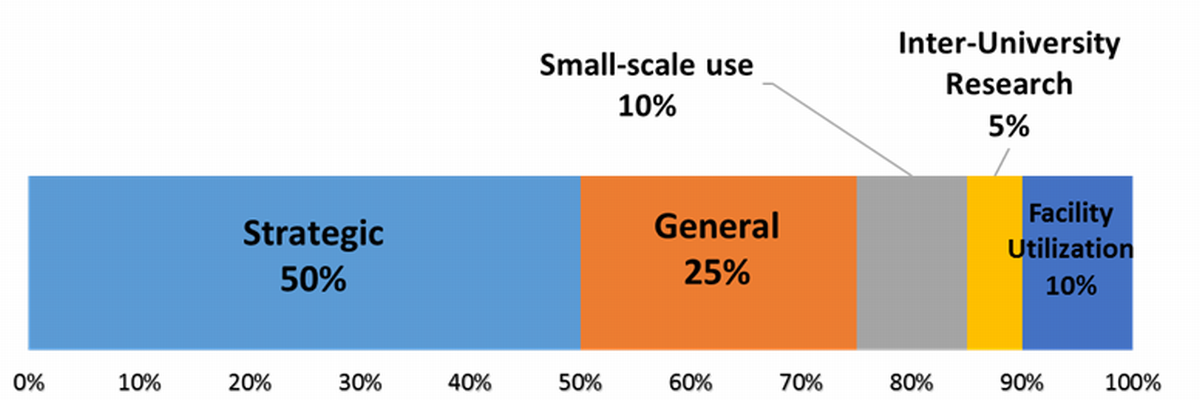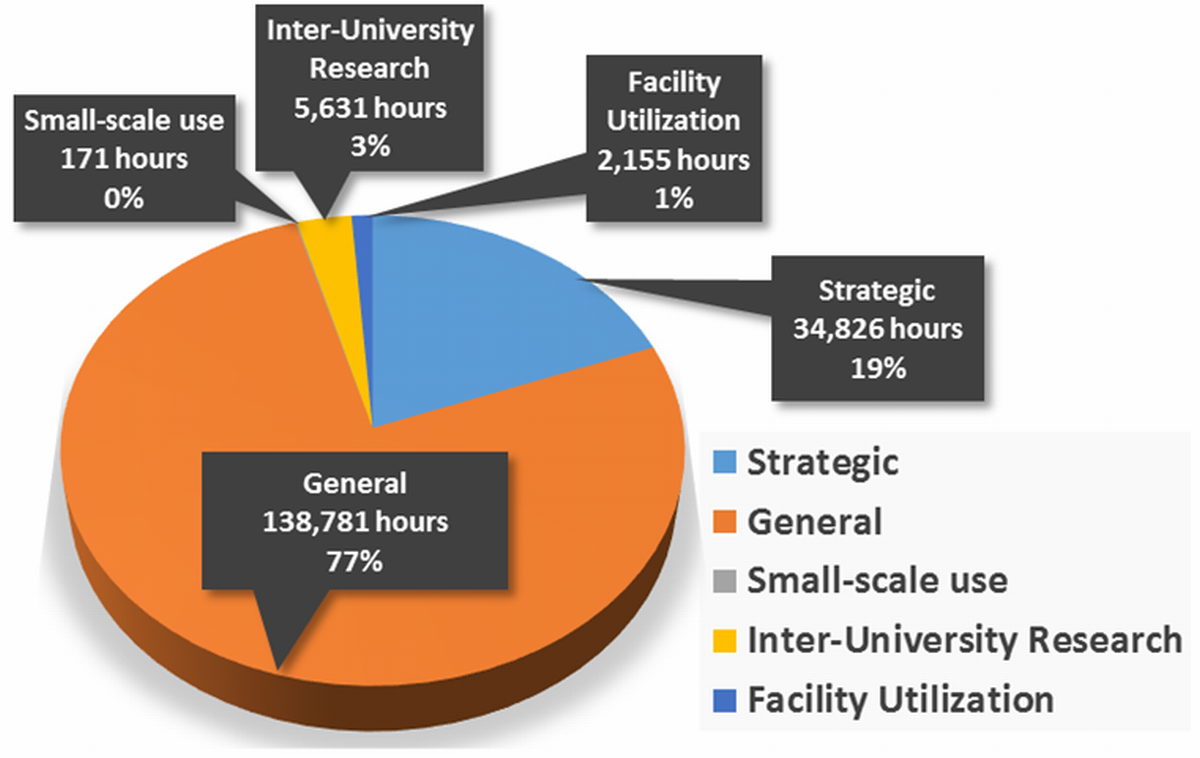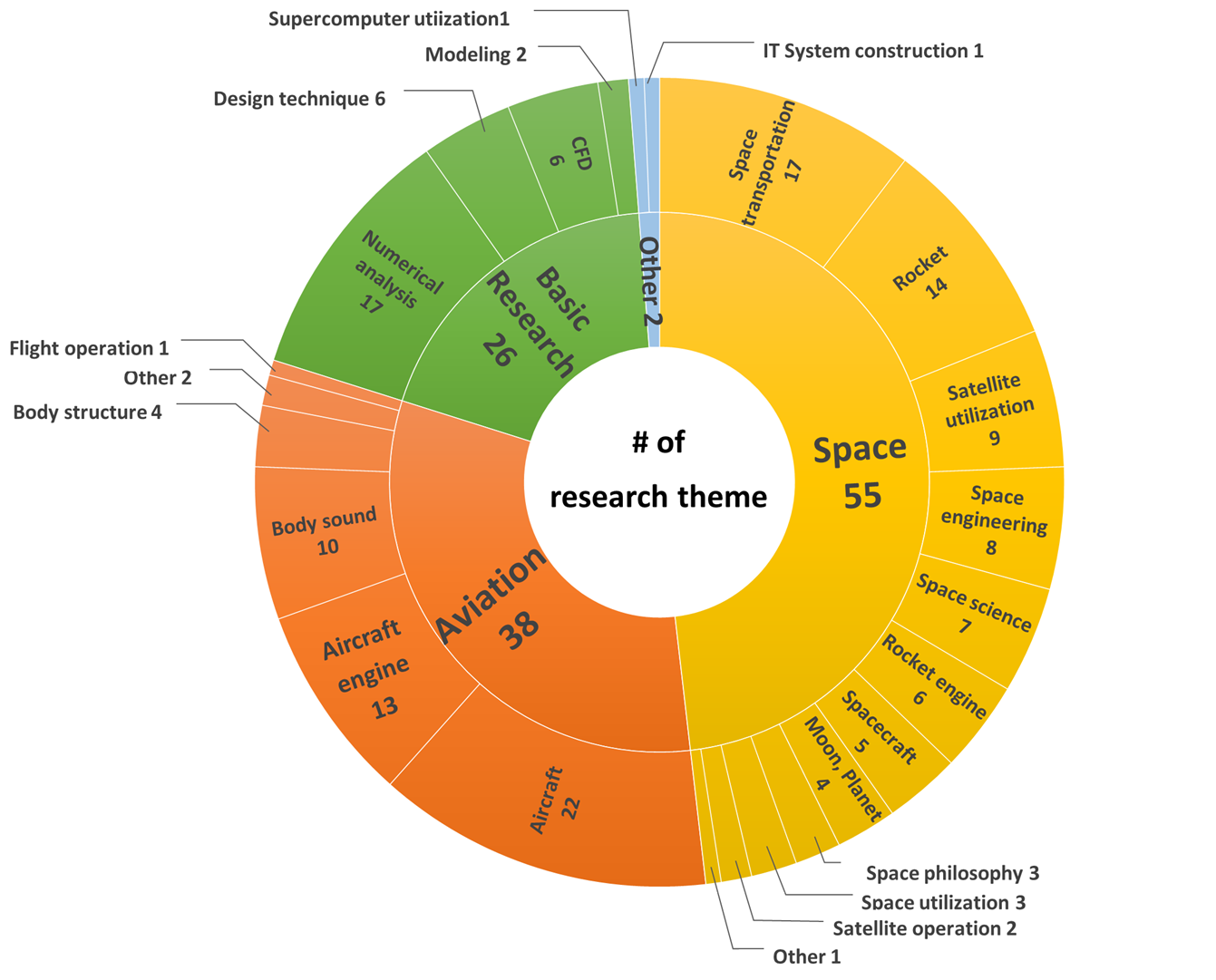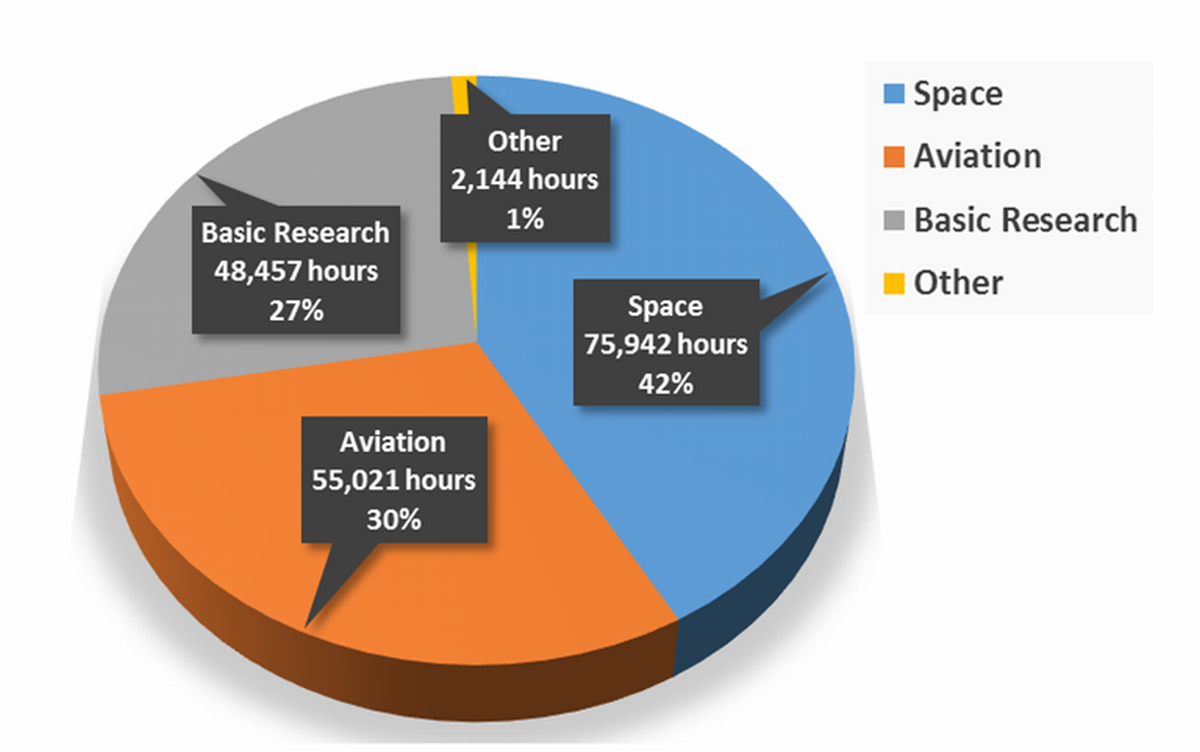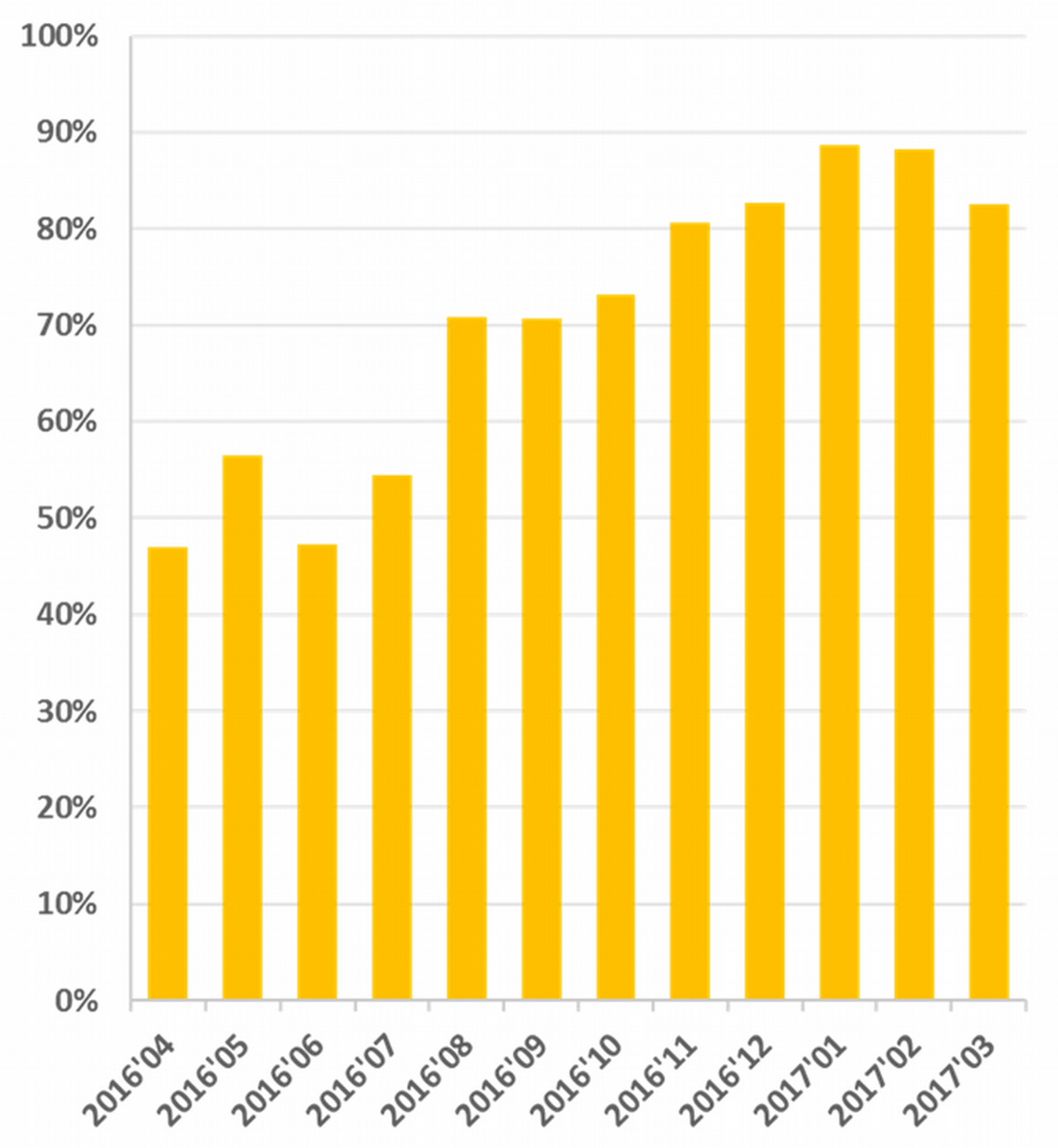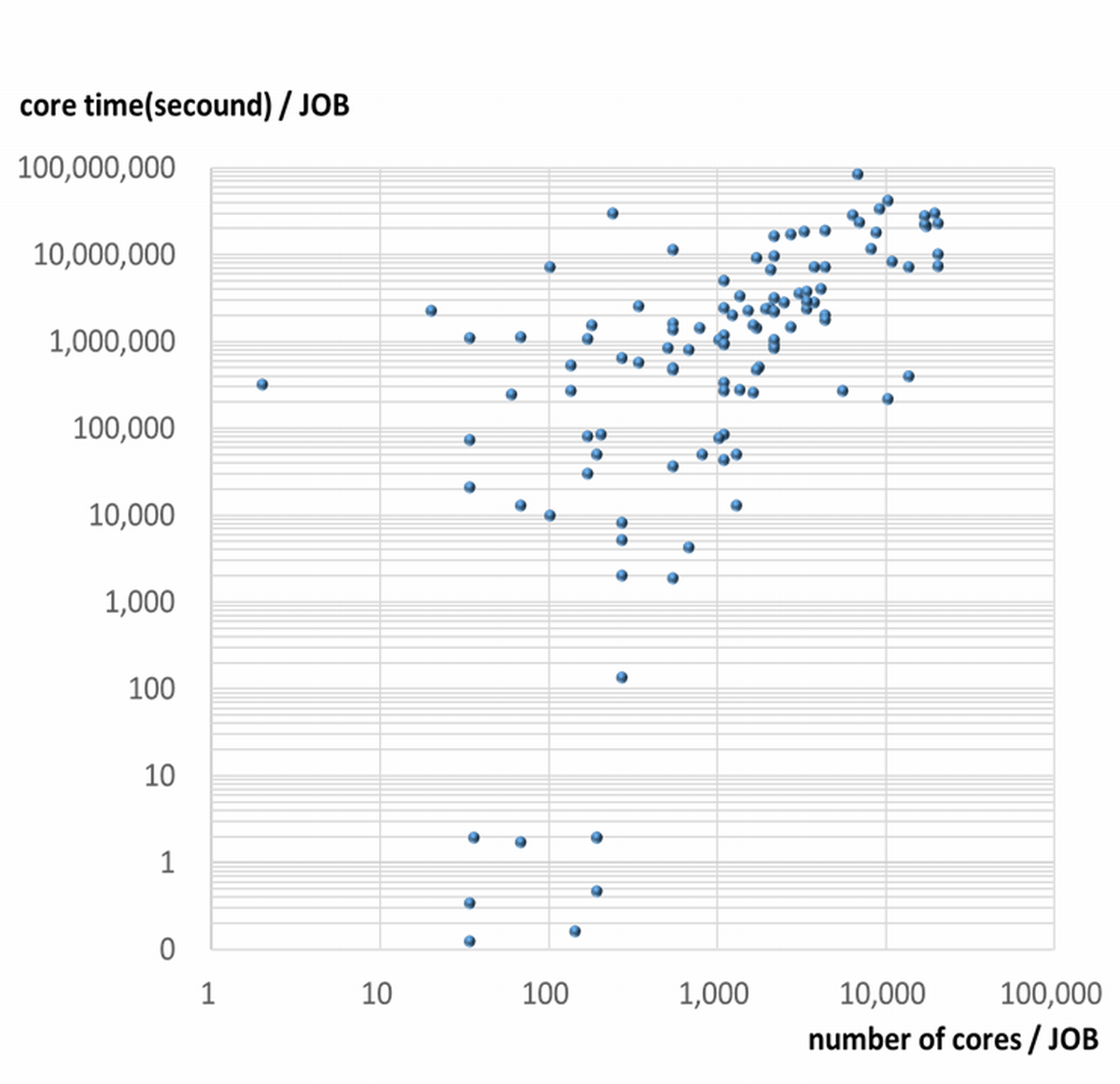Overview of JSS2 Usage
JAXA Supercomputer System Annual Report April 2016-March 2017
1.Outline of the system
In addition to SORA-MA, JSS2 consists of advanced systems such as SORA-LM, a large-scale memory system, SORA-PP, a pre-post system, SORA-FS, a file system and J-SPACE an archiving system. JSS2 is also designed for energy saving by adoption of a water-cooling system. JSS2 is composed of these well-developed systems and eco-friendly policy.
In April 2016, SORA-MA was updated to the peak performance 3.49 PFLOPS and the total memory size 100 TiB. Since then, JSS2 has been fully operational.
For utilization of the supercomputer from remote locations via the Internet, JAXA has developed and examined the high-speed transfer technology that is 30 times faster than the conventional system.
Specification of JSS2 system is indicated in the Table 1-1.
| System name | Main System (SORA-MA) |
Pre-Post System (SORA-PP) |
Large Memory System (SORA-LM) |
Tsukuba Pre-Post System (SORA-TPP) |
|---|---|---|---|---|
| Model name | Fujitsu FX100 | Fujitsu RX350 S8 | Fujitsu RX350 S8 | Fujitsu RX350 S8 |
| Total #nodes | 3,240 | 160 | 5 | 25 |
| Theoretical peak performance |
3.49PFLOPS | 53.7TFLOPS | 2.10TFLOPS | 8.40TFLOPS |
| #cores/CPU | 32 | 6 | 8 | 6 |
| #CPUs/node | 1 | 2 | 2 | 2 |
| Memory size/node | 32GB | 64GB | 1024/512GB | 64GB |
JSS2 resource distribution in fiscal year 2016
A super computer resource distribution frame is set up for outcome maximization of research and development. JSS2 resource distribution frame is indicated on Fig.1-1.
The frame shows the minimum usable amount. For example, a job is beyond the standard value of the frame, and when other frames have enough room, it’s possible to use beyond the standard value of the frame.
Reference)
- Strategic: The frame on which JAXA works strategically
- General: Use of a general research theme besides the strategy
- Small-scale use: Small-scale calculation of an experimental or germinating study
- Inter-University Research: Inter-University Research Institute Program of JSS2
- Facility Utilization: The frame for which the user outside JAXA uses super computer resources by a charge. Before using the Facility Utilization, the trial use (no charge) to determine the availability of it is included in this frame.
Statistics of number of users
JSS2 as well as JAXA inside users, is used by JAXA outside users as joint research, Inter-University Research and Facility Utilization.
The number of users is indicated in table 2-1
| frame | Number of users |
|---|---|
| Strategic | 173 |
| General | 249 |
| Small-scale use | 143 |
| Inter-University Research | 64 |
| Facility Utilization | 15 |
| total | 644 |
Statistics of Job time by the frame
Strategic and general account for 96% of a total. As for the JAXA outside use, the Inter-University Research is almost as scheduled with 3%. On the other hand, JAXA Facility Utilization had enough room for assign resources.
Job time to the frame is indicated on Fig.1-2
3.The statistics of the research fields
The number of research themes
Number of research themes by category of each fields was Space 79 (48%), Aviation 52 (32%), Basic Research 31 (19%) (Table 3-1). The top of category is occupied by Aircraft 22, Numerical Analysis 17, Space Transportation 17, Rocket 14 and Aircraft Engine 13(Fig.2-1).
| field | # of research themes for each field |
# of the themes for categories including duplicated counts |
|---|---|---|
| Space | 55 | 79 (48%) |
| Aviation | 38 | 52 (32%) |
| Basic Research | 26 | 31 (19%) |
| Other | 2 | 2 ( 1%) |
| total | 121 | 164 |
The Job time
Percentages of annual total job time for each research field were Space 42%, Aviation 30% and Basic Research 27%. An annual total in the job time for each field is indicated on Fig.2-2.
The average job times of the research theme for each field were Basic Research 1,864 hours, Aviation 1,448 hours and Space 1,381 hours. The average job time is indicated in Table3-2.
| field | # of research themes ① |
The annual total of job time ② |
average job time ②/① |
|---|---|---|---|
| Space | 55 | 75,942h | 1,381h |
| Aviation | 38 | 55,021h | 1,448h |
| Basic Research | 26 | 48,457h | 1,864h |
| Other | 2 | 2,144h | 1,072h |
4.The operation of JSS2
The system operating ratio
After starting an operation of SORA-MA that has been upgraded in April 2016, job scheduling has been improved. A ratio of filling of job has reached nearly 90 % of resources in the end of the fiscal year.
A change of monthly filling ratio is indicated on Fig.3-1
Reference)
A filling ratio of job is total execution core time of all jobs for total core time of an operating plan. For example, when all of the cores are assigned to the running jobs, a filling ratio is 100%.
Characteristic of the jobs
The large scale parallel job which is more than 500 parallel has become mainstream. When the number of core of job is increasing, core hours tend to grow big. In addition, a section surrounded in 1,000-10,000 core number and 1,000,000-10,000,000 second core time has the most jobs. The job distribution map of core number and core execution time are indicated on Fig.3-2.
JAXA Supercomputer System Annual Report April 2016-March 2017



